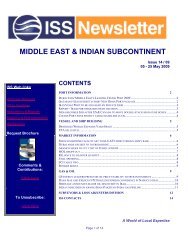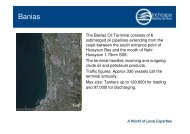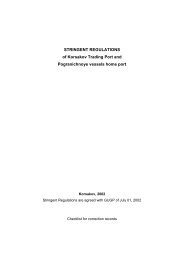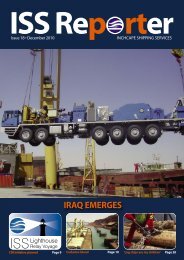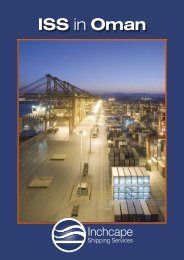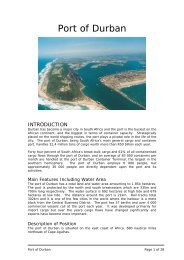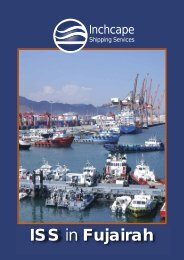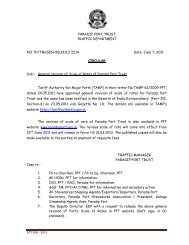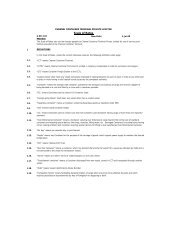Prigorodnoye Export Terminal Port Regulations.pdf - Inchcape ...
Prigorodnoye Export Terminal Port Regulations.pdf - Inchcape ...
Prigorodnoye Export Terminal Port Regulations.pdf - Inchcape ...
You also want an ePaper? Increase the reach of your titles
YUMPU automatically turns print PDFs into web optimized ePapers that Google loves.
<strong>Prigorodnoye</strong> <strong>Export</strong> <strong>Terminal</strong> <strong>Port</strong> <strong>Regulations</strong> Rev 01<br />
29.5 Vessels arriving in the Inerted Condition<br />
Vessels may only arrive at the terminal inerted following new build or refit.<br />
Vessels arriving to load at the terminal with tanks in the inerted condition will be required to<br />
handle the vapour generated utilising the on board systems until the CO2 content of vapour in<br />
the ship’s tanks is 1% or less.<br />
Inert tank vapour may initially be discharged to atmosphere until a hydrocarbon content of 8%<br />
is recorded at the ship’s vent stack, at which stage the CO2 content of the vapour should be<br />
sufficiently low enough to support combustion of vapour in the ship’s boiler, if permitted in<br />
section 26.2. This process should continue until the CO2 content of the tank vapour reaches<br />
1% or less at which time the terminal may accept vapour as boil off gas (BOG) to shore flare<br />
system as in section 29.6.<br />
29.6 Re-gasification & Cooldown<br />
All ship’s tank vapour will initially be routed to ship’s vents until hydrocarbon level reaches<br />
>8% by volume after which vapour may be diverted to shore flare system. The level of CO2 in<br />
the return gas will be monitored ashore until this has been confirmed to be less than 200 ppm.<br />
On ship’s confirmation that CO 2 level is less than 200ppm, the terminal will require a stop in<br />
order to change over the return gas from flare system to the boil off gas (BOG) shore tanks.<br />
It is anticipated that this stoppage will be for approximately five minutes, but every effort will be<br />
made to minimise the time involved. The terminal will continue to monitor the CO2 levels of<br />
the return gas until it is less than 200ppm at which time gassing up will be stopped to permit<br />
changeover of shore return gas from flare system to the shore tanks.<br />
A close liaison between the Responsible Ship’s Officer, The Loading Master and the<br />
Prigorodonoye Control Room will be required during this operation to permit a smooth<br />
operation and best use of vapour recovery with minimal use of flared vapour.<br />
29.7 Single Arm Cooldown<br />
The line up and cool down of the tanker's loading lines will be as per the normal cooldown<br />
procedure in 29.2 except that only one loading arm, will be required to be cooled at this<br />
stage. The loading arm to be used will be advised by the Loading Master at the on board<br />
pre-loading meeting and agreed with the vessel.<br />
After cooldown of the nominated loading arm (at least one hour) flow rate to the tanker will be<br />
adjusted in accordance with the tanker’s requirement.<br />
in<br />
During the latter stages of the cooldown the remaining two loading arms will be cooled down<br />
keeping with the overall flow rate required by the tanker.<br />
At the completion of cooldown loading will be stopped to carry out a ‘cold’ ESD test as above.<br />
29.8 Draining and Inerting of Loading Arms<br />
Draining, purging and inerting of loading arms will be carried out as above section 29.4.<br />
0000-S-90-01-P-0207-00-E<br />
Page 57 of 101<br />
BM Code: EP.14.03.01.09



